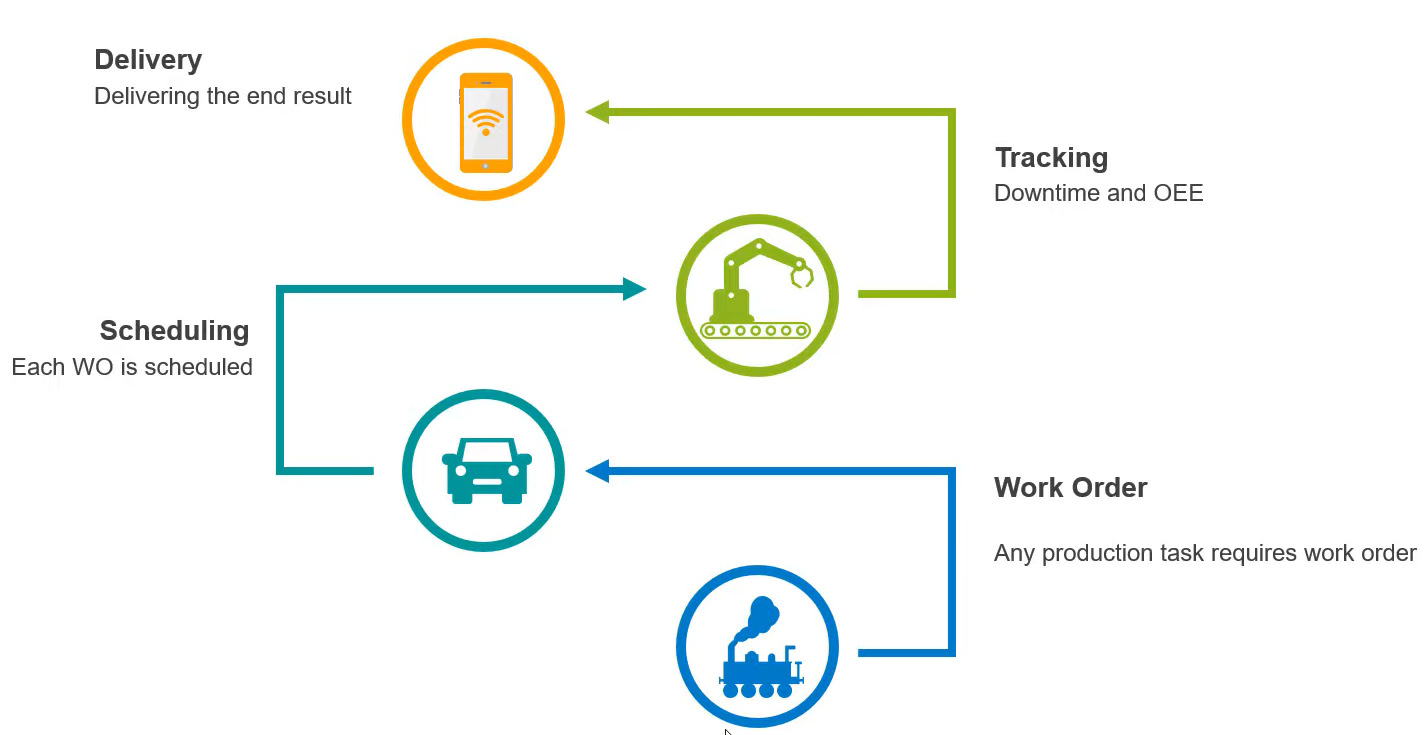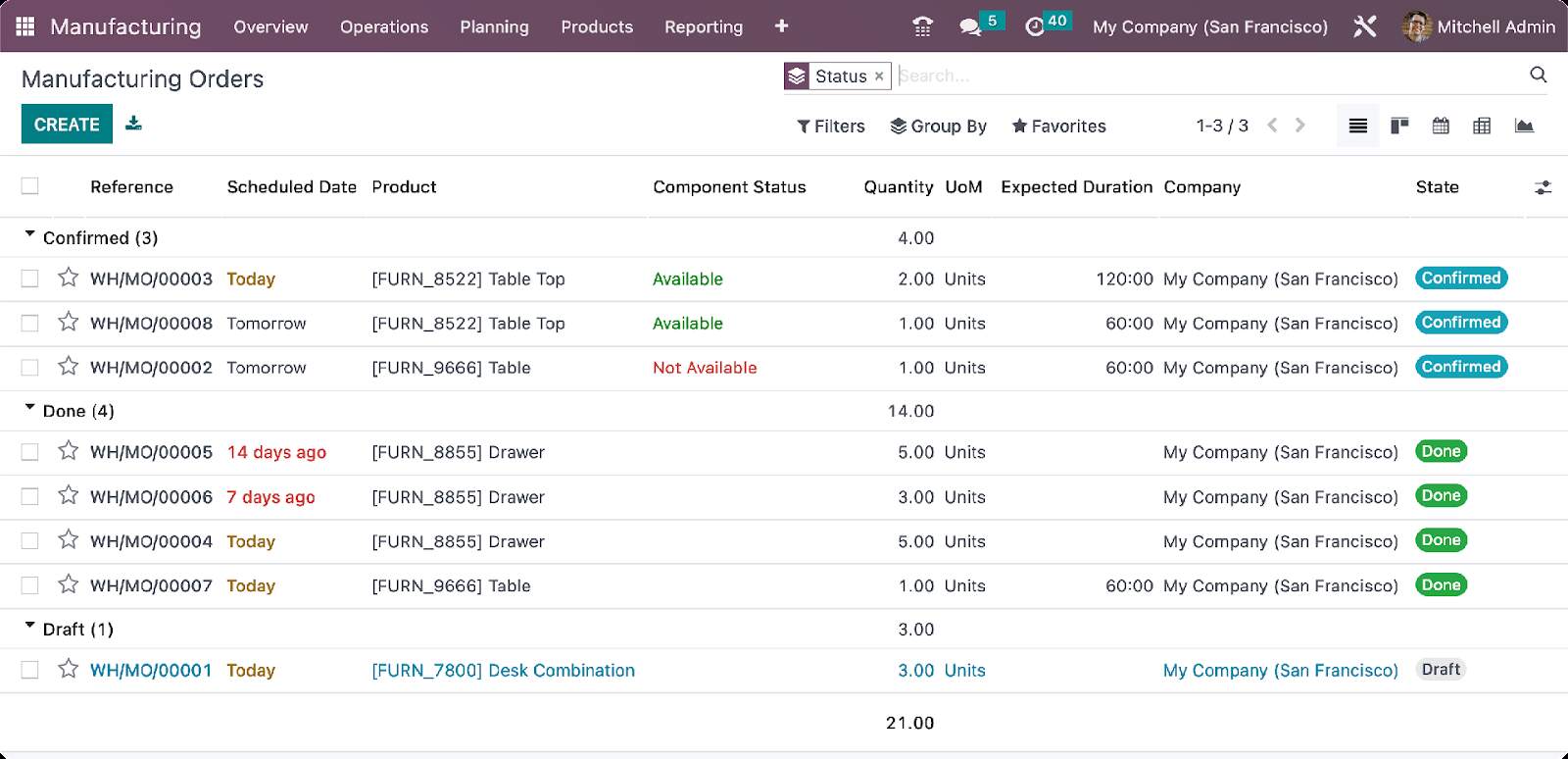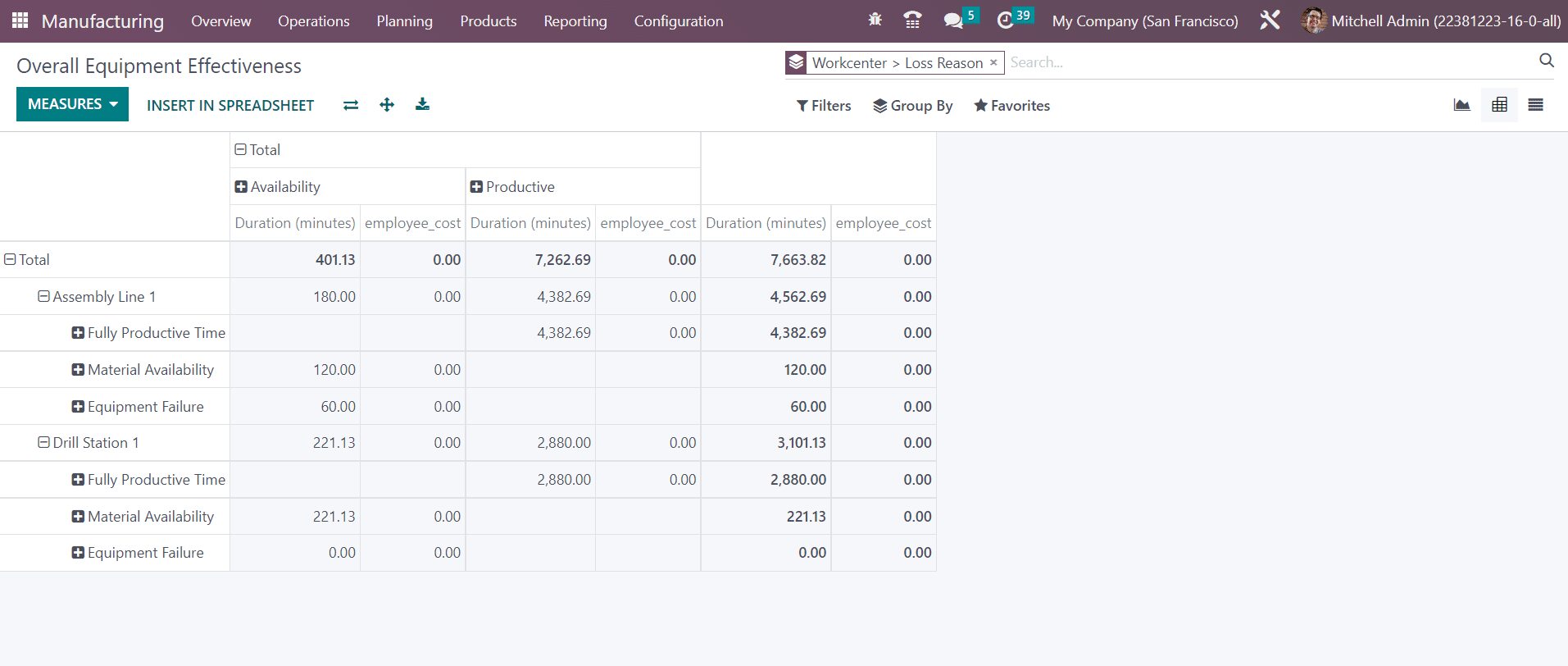Manufacturing in Malaysia is always facing industry-wide pressure to achieve speed, accuracy, and efficiency. If not careful or slow in meeting the industry's strict requirements, any inefficiencies, such as non-connected systems or manual data processing, will compound and slow down production and cut profit margins. The lack of a unified system is one of the key reasons for this situation.
Odoo MES (Manufacturing Execution System) from Odoo ERP is the answer to this difficult problem. It provides the control, processing speed, and intelligence needed to optimize the overall manufacturing process. But specifically, how does Odoo MES transform manufacturing? What are the challenges and considerations for businesses using Odoo ERP that want to integrate and accelerate the completion of Odoo MES in the operating system?
Our article below, from the perspective insights of our Odoo experts with more than 10 years of experience, will help you clarify these issues and embark on the journey of utilizing Odoo MES with the most confidence.
Comprehensive View of Odoo MES: Definition & Key Features
Take the specific core information of Odoo MES before all analysis.
Definition: What is Odoo MES?
Manufacturing Execution Systems (MES) are responsible for monitoring, controlling, and optimizing the manufacturing process to create a direct link between Enterprise Resource Planning (ERP) and shop floor operations. By collecting data directly from machines and workstations, MES increases accuracy and maintains consistency across all manufacturing operations. It minimizes guesswork and reduces the need for manual labor.

Building on that, Odoo Manufacturing has set out to further enhance the operational efficiency of manufacturing businesses by researching and implementing Odoo MES into the system. It even takes the MES concept further by integrating real-time data synchronization across all manufacturing operations. Machines, operators, and inventory are always connected to ensure that manufacturing plans seamlessly match demand fluctuations.
A concrete example: how are you running your manufacturing business? Is your team relying solely on spreadsheets and manually updating inventory? Are stock shortages a regular occurrence that leads to scheduling conflicts and even impacts the entire chain of operations, including customer feedback? Odoo MES handles all of that with its core features which we will cover in detail below.
Combined with a streamlined plan, precise execution, and intelligent automation, Malaysian manufacturers can easily use Odoo MES to take full control of their manufacturing processes without disruptions.
Key features of Odoo MES
Each feature of Odoo MES works in a consistent and complementary way to suit the industry-specific nature of manufacturing operations.
- Digital work orders: Work orders are automatically generated based on production schedules and inventory status. Users access work instructions, eliminating paper and all manual tracking.
- Real-time machine connectivity: Your machines link directly to Odoo MES to transmit operational data directly. Performance, downtime, and cycle times are updated continuously so users can easily track changes in on-site operations in real-time.
- Automated production scheduling: Odoo MES synchronizes production plans with resource availability and order priority. Adjustments, if any, are made automatically based on real-time conditions to optimize work sequences.
- Integrated quality control: Inspections are automatically triggered at critical manufacturing stages. Non-conformance data is captured immediately to create a structured quality management process without manual intervention.
- Performance analytics: Odoo MES compiles data on production efficiency, machine utilization, and operator productivity. Graphical dashboards on this function of Odoo Manufacturing provide in-depth analysis to refine processes and make decisions.
- Shop floor data collection: Operators enter production data using barcode scanners, tablets, or terminals. The system records work progress, downtime, and material usage.
You should also read this article: Strengthen Process in Malaysia: 10 Best Manufacturing ERP Software
Benefits When Using Odoo MES: 6 Crucial Ones You Should Take Advantage Of
With its key features, Odoo MES restructures the execution process with intelligent automation. It creates an environment where productivity thrives without manual intervention. Of course, businesses can benefit a lot from this function.
Precision-driven production control
Odoo MES allows business owners to leave instructions directly in each workstation to ensure strict adherence to pre-defined parameters in execution. Every action of factory personnel is in accordance with exact specifications, removing room for improvisation. Machines, operators, and workflows are synchronized into a single, error-free system. Your manufacturing process now runs absolutely smoothly without relying on experience or instinct.
Real-time shop floor monitoring for instant decision-making
Imagine a production manager who monitors all operations without leaving his desk. That is the ultimate benefit that Odoo MES brings to businesses. This function creates a live digital twin of the shop floor, where machine status, operator activity, and material movement are updated.

Unexpected delays, equipment failures, or bottlenecks are immediately visible as they occur. Decisions become much more proactive to avoid unpredictable changes that can negatively impact manufacturing control processes.
Automated prevention and integrated quality control
The typical manufacturing process ends with a step of inspecting and reviewing the product again to detect errors. This is necessary, but it also costs the business a lot of effort, time, and materials.
Odoo MES prevents errors at the source by embedding quality validation directly into the process. Its smart sensors trigger alerts, and automatic approvals to block non-conforming items as soon as errors are detected, and quickly notify operators of deviations. Errors that do not accumulate are prevented before they spread. This is how Odoo MES saves time and effort while keeping the quality of the product output at its best.
Seamless inventory and material flow synchronization
If your manufacturing business in Malaysia is using high-speed assembly lines, congratulations, you have adopted a modern and innovative technology to improve your operational capabilities. But don't forget, it won't mean anything if the materials don't arrive on time.
Odoo MES comes to change the operation of inventory into a responsive network. Metrics related to inventory levels, demand forecasts, and workstation needs are all communicated with each other on the same system. Instead of a static supply chain, your factories operate with dynamic material movement. This fact helps you avoid overstocking and prevent shortages and delays in production.
As a result, materials flow seamlessly, matching the rhythm of production without delay.
Smart manufacturing insights for proactive optimization
Odoo MES not only collects information based on the behavior of the users, but it also converts the received data into accurate insights from production rates, downtime trends, to efficiency gaps. The detailed recorded figures help business owners quickly make data-driven decisions, and quickly improve if any variable is recorded negatively.

The manufacturing process takes place in many steps, and Odoo MES brings it all together into a direct roadmap for timely navigation and correction.
Full traceability for compliance and process transparency
With Odoo MES, tracking the end-to-end process of materials is no longer your responsibility. This function fully records all information when entering the product, from sourcing to final assembly. Every change and movement is noted clearly and sequenced automatically.
Furthermore, regulatory audits are no longer required for businesses to maintain manual records. All compliance documents, transactions, and production details are stored with Odoo MES on the system and can be accessed at any time once you have been granted permission. The process is systematic from quality control to quantity, making material traceability no longer a burden. Accountability and customer trust are also thoroughly reinforced.
Process of Starting The Implementation with Odoo MES
Odoo MES transforms manufacturing operations but demands a precise approach from the outset. A structured execution framework prevents inefficiencies and maximizes system capabilities.
Step 1: Defining manufacturing objectives with Odoo MES
Before diving into the research and deciding on Odoo MES integration, you need to build a strategy that aligns with clear milestones. It should reflect your actual manufacturing priorities, constraints, and growth goals when implementing a new system.
- Identify core targets: Establish specific goals, whether reducing downtime, enhancing traceability, or synchronizing production lines.
- Map existing gaps: Diagnose inefficiencies across work centers, resource allocations, and production scheduling.
- Quantify performance metrics: Set benchmarks for cycle times, defect rates, and machine utilization to track Odoo MES-driven improvements.
Step 2: Configuring the system for precision execution
Configuring is a prerequisite for Odoo MES to meet business requirements and not compromise operational consistency. Note: the way you configure at this stage must be consistent with your manufacturing processes and enterprise architecture.
Configuration area | Key setup tasks |
Work centers | Define stations, resource capacities, and operational constraints |
Routing paths | Structure task sequences and production stages for seamless execution |
Data synchronization | Align Odoo MES inputs with ERP modules for inventory, procurement, and accounting |
Quality control | Establish real-time validation triggers for in-process inspections |
Step 3: Deploy Odoo MES with minimal disruptions
In this step, your team starts implementing Odoo MES and gradually makes it official in the technology ecosystem supporting business operations. This process needs to follow the overall implementation strategy to avoid too much impact on the overall and progress of manufacturing operations.
- Pilot testing: Activate Odoo MES in controlled production zones before scaling plant-wide.
- Parallel operations: Run legacy systems alongside Odoo MES to prevent workflow disruptions.
- Error diagnostics: Capture real-time discrepancies and refine system configurations before full adoption.
Step 4: Drive workforce readiness and adoption
The level of the human resources greatly determines the success of applying Odoo MES in the actual efficiency of the manufacturing process.

- Role-specific training: Equip production managers, floor supervisors, and operators with tailored system insights.
- Process walkthroughs: Simulate real-time scenarios to accelerate user adaptation and minimize onboarding friction.
- Adoption monitoring: Track user engagement, error frequency, and feedback to refine training methodologies.
Step 5: Refine performance through continuous optimization
You should test and optimize continuously even when Odoo MES is in operation so that the efficiency is always at its best.
- Live performance audits: Conduct system evaluations to detect process bottlenecks and optimization opportunities.
- Data-driven refinements: Adjust system parameters based on real-time production insights and historical trends.
- Ecosystem expansion: Scale MES integrations with advanced automation tools, AI-driven analytics, and IoT enhancements.
Streamline Your Journey with Odoo MES: Challenges and Tips to Overcome from Our Experts
Manufacturing businesses consider Odoo MES as a proactive solution to avoid disruptions in production efficiency and allocate manufacturing resources appropriately. However, challenges when implementing Odoo MES in practice still exist, and you should really understand them and take advice from our team of experts before proceeding to have a journey to make the most of this function.
#1 System integration complexity and data migration risks
Integrating Odoo MES with the existing infrastructure of the business is prone to synchronization conflicts, fragmented data flows, and compatibility issues. Data migration errors will lead to operational differences and mismatches with the overall workflow. Without a structured integration strategy, disruptions will persist and reduce the production efficiency of the business.

You should:
- Map data structures before migration to eliminate discrepancies and standardize formatting across platforms.
- Conduct parallel testing with historical data to validate system integrity before full-scale implementation.
- Configure API-based synchronization for seamless communication between Odoo MES and legacy systems.
- Deploy phased integration to minimize downtime and isolate potential system conflicts before scaling up.
#2 Operator resistance and skill gaps
Despite being a smart system, Odoo MES still requires human interaction. Operators control machines, monitor work orders, and respond to system alerts. However, problems arise when your employees are too accustomed to manual processes. They risk becoming frustrated, slow to adopt, or even resistant to a new system and way of working.
In other cases, the lack of structured training further undermines user confidence, forcing them to avoid the system or misuse important features. This fact makes Odoo MES not deliver the expected value to the business, and even hinders growth.
You should:
- Conduct user training by collaborating with reputable Odoo providers.
- Customize role-based dashboards to display only the most relevant functions for each operator.
- Set up sequential task execution to enforce step-by-step process adherence.
- Embed interactive training modules within the MES interface to reduce onboarding time.
- Implement real-time feedback loops to track user errors and reinforce learning immediately.
#3 Cost pitfalls in Odoo MES implementation
The cost of configuring and implementing Odoo MES is a concern, as it directly affects the cash flow of the business. Setting up Odoo MES requires integration with other Odoo modules such as Odoo Inventory or Odoo Accounting that the business is already running, and also incurs additional Odoo licensing costs. Customization costs also increase when businesses need to modify workflows without thoroughly evaluating the integration features, leading to prolonged development work and higher consultant charges.

Mistakes that occur when the initial customization phase is not done and calculated carefully make the later stages more difficult. You will need to maintain the system continuously, update the system, and rely on a dedicated IT team - actions that add to the financial burden.
You should:
- Select the right Odoo edition based on operational requirements to avoid unnecessary licensing fees.
- Evaluate hardware investments to match actual MES needs instead of overspending on infrastructure.
- Plan integration workflows carefully to minimize troubleshooting and post-implementation fixes. You should work with the Odoo experts at this step for the most accurate results.
- Implement a structured training program to reduce errors and minimize repeated onboarding costs.
Final Thoughts
In conclusion, Odoo MES is a key benefit for manufacturing businesses in Malaysia. The uniqueness in delivering industry-specific solutions is Odoo’s strength, and this function is a strong testament to this assertion. The bottlenecks in the manufacturing process are gradually being removed with the unique features of the industry of Odoo MES.
Want to learn more about Odoo MES and Odoo ERP for Manufacturing ecosystem for integration and implementation? Contact A1 Consulting immediately for custom consultation and more experts insights for your Malaysia business.
